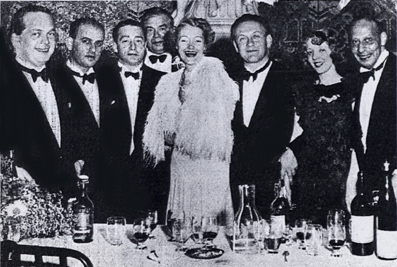Paul Stern
Dr Paul Stern (1892 - 12 June 1948), lawyer and diplomat, was an Austrian international bridge player who fled to London in 1938. He was a bidding theorist and administrator who contributed to the early growth of the game. He founded the Austrian Bridge Federation in 1929, and was its first president.
Career in bridge
Stern was a member of the Austria open teams that won the first two European championships, 1932 and 1933, under the auspices of the International Bridge League in Scheveningen, Netherlands, and in London. In 1935 he developed the Vienna System, or Austrian System, the first highly artificial bidding system to achieve international success. Strong hands (equivalent to 18 or more high-card points using the standard Milton Work count) were opened One Notrump; most hands with 11-17 points that lacked a five card spade, heart or diamond suit were opened One Club. Many strong players adopted the Vienna System and Stern remained the leader and an important mentor. He was the non-playing captain when Austria recaptured the European championships (Open category) in 1936 and 1937.

The winning Austria open team at the 1937 world championships: Karl Schneider, Hans Jellinek, Edouard Frischauer, Paul Stern (captain), Josephine Culbertson (US), Walter Herbert,
Helen Sobel (US), and Karl von Blöhdorn. Missing: Udo von Meissl.
The 1937 IBL Championships doubled as the first world championship tournament, conducted June 1937 in Budapest. In the final, Austria defeated Ely Culbertson's team from the United States by 4,740 points over 96 boards, using the Vienna System against the natural Culbertson system. The result of this match caused a sensation, as did all the previous Culbertson matches. Stern's book on the championships does not mention that there were other teams in the event! The world champions were anchored by Karl Schneider and Hans Jellinek, perhaps the world's strongest pair at the time, with Karl von Blöhdorn, Dr Edward Frischauer, Walter Herbert and Udo von Meissl. (Bridge teams, or teams-of-four, commonly have six players with two on the "bench" at any time.) Culbertson traveled with four players, as usual - Ely and Josephine at one table, Helen Sobel and Charles Vogelhofer at the other - and it was widely thought at the time that this quartet was not America's best. In addition, the Culbertsons were on the verge of divorce, which cannot be good for a bridge partnership.
Austria also won the Ladies flight of the exceptional European/World championships, and thus won the first three annual Europeans for women. Decades later, Stern's protégé (Erika) Rixi Scharfstein, a member of those 1935 to 1937 champions, would win many European and world titles as Rixi Markus representing Great Britain.
According to a September 1948 article on Markus in the Contract Bridge Journal, Stern was "perhaps the greatest coach who ever lived". A dictatorial leader, Stern insisted that his players adhered with rigidity to his system, but his over-emphatic statements and instructions were tempered by an underlying warmth of personality.
When Germany annexed Austria in 1938 (Anschluss), he returned his Iron Cross, awarded in World War I, to the Nazi authorities and included an insulting letter. As a result he was placed at number eleven on their death list. He went into hiding and escaped to England in 1938. He was a major bridge figure in London for the next decade, founding a school of bridge which taught his bidding system, running a weekly duplicate in Hampstead during World War II and playing rubber bridge regularly at the Hamilton Club and Lederer’s. Stern became a naturalised British citizen.
Although he had been a career diplomat, he did not tolerate fools gladly at the bridge table. Once he was confronted with having thrown a cup of coffee at his partner, and said, "It was nothing serious. There was no sugar in it".
Publications
COMMENTS



 The winning Austria open team at the 1937 world championships: Karl Schneider, Hans Jellinek, Edouard Frischauer, Paul Stern (captain), Josephine Culbertson (US), Walter Herbert,
The winning Austria open team at the 1937 world championships: Karl Schneider, Hans Jellinek, Edouard Frischauer, Paul Stern (captain), Josephine Culbertson (US), Walter Herbert,